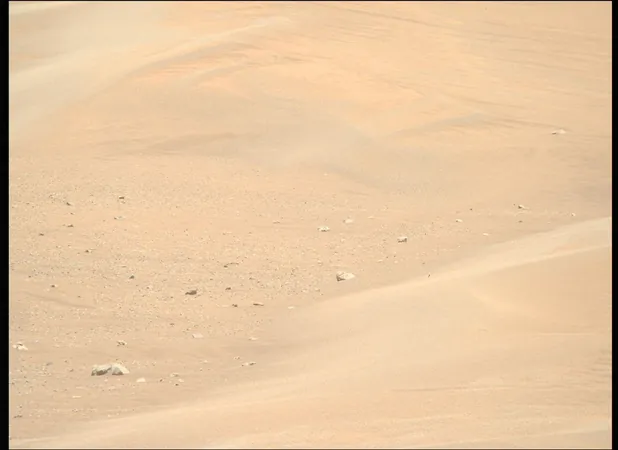
NASA's Perseverance Rover Uncovers Secrets of Mars' Giant Sand Ripples
2025-08-26
Author: Wei Ling
A New Mission on Mars
NASA's Perseverance rover has directed its gaze toward astonishing sand formations known as megaripples at a location dubbed Kerrlaguna on Mars. Standing up to a meter tall, these majestic structures are shedding light on how Martian winds are actively sculpting the planet, and they may also play a pivotal role in preparing for future human explorations.
Is Mars Really a Static World?
While we often picture Mars as a barren, unchanging place, its landscape is far from static. Powerful winds continuously reshape it. As NASA eloquently puts it, "On Mars, the past is written in stone, but the present is written in sand." Perseverance's recent focus on these colossal sand formations reveals the story of contemporary Martian weather patterns.
A Challenging Journey of Discovery
After wrapping up its work at a geological hotspot called Westport, Perseverance attempted to navigate the steep slopes toward a new rock exposure named Midtoya. However, due to unstable terrain, the rover had to retreat to safer grounds. Notably, Perseverance discovered intriguing spherule-rich rocks, including the eye-catching helmet-shaped rock known as "Horneflya," which captivated social media.
From Slopes to Sand Dunes
Once at Kerrlaguna, Perseverance found itself among towering megaripples—massive wind-driven formations that loom like sand dunes across an alien landscape. These formations may not seem like much at first glance, but their heights mirror that of an average person, pushing the boundaries of what we know about Martian geography.
Unlocking the Mysteries of Modern Mars
Acknowledging the importance of understanding current Martian conditions, the science team initiated a detailed mini-campaign to study the megaripples, departing from Perseverance's typical focus on ancient rocks. Insight into the present-day environment is crucial, and examining these windblown giants could offer significant findings.
What Do Inactive Megaripples Reveal?
Unlike Curiosity, Perseverance's predecessor, which studied active dunes in Gale Crater, the megaripples at Kerrlaguna appear dusty and inactive. This provides a unique opportunity to understand a different aspect of Martian sand formations. These older features could yield insights into how wind interacts with even trace amounts of water on present-day Mars.
A Multifaceted Research Approach
Equipped with advanced instruments like SuperCam and Mastcam-Z, Perseverance meticulously analyzed the megaripples' environment, measuring sand grain sizes and chemical compositions and searching for any salty crusts formed over time. This research is more than just scientific exploration; understanding Martian soil could be critical for the survival of future astronauts.
Laying the Groundwork for Human Exploration
The investigation at Kerrlaguna also sets the stage for an upcoming study at Lac de Charmes, which features even more expansive sand formations. By piecing together these findings grain by grain, Perseverance is not only uncovering the secrets of how Mars works today, but also paving the way for humanity's future journey to our neighboring planet.



 Brasil (PT)
Brasil (PT)
 Canada (EN)
Canada (EN)
 Chile (ES)
Chile (ES)
 Česko (CS)
Česko (CS)
 대한민국 (KO)
대한민국 (KO)
 España (ES)
España (ES)
 France (FR)
France (FR)
 Hong Kong (EN)
Hong Kong (EN)
 Italia (IT)
Italia (IT)
 日本 (JA)
日本 (JA)
 Magyarország (HU)
Magyarország (HU)
 Norge (NO)
Norge (NO)
 Polska (PL)
Polska (PL)
 Schweiz (DE)
Schweiz (DE)
 Singapore (EN)
Singapore (EN)
 Sverige (SV)
Sverige (SV)
 Suomi (FI)
Suomi (FI)
 Türkiye (TR)
Türkiye (TR)
 الإمارات العربية المتحدة (AR)
الإمارات العربية المتحدة (AR)